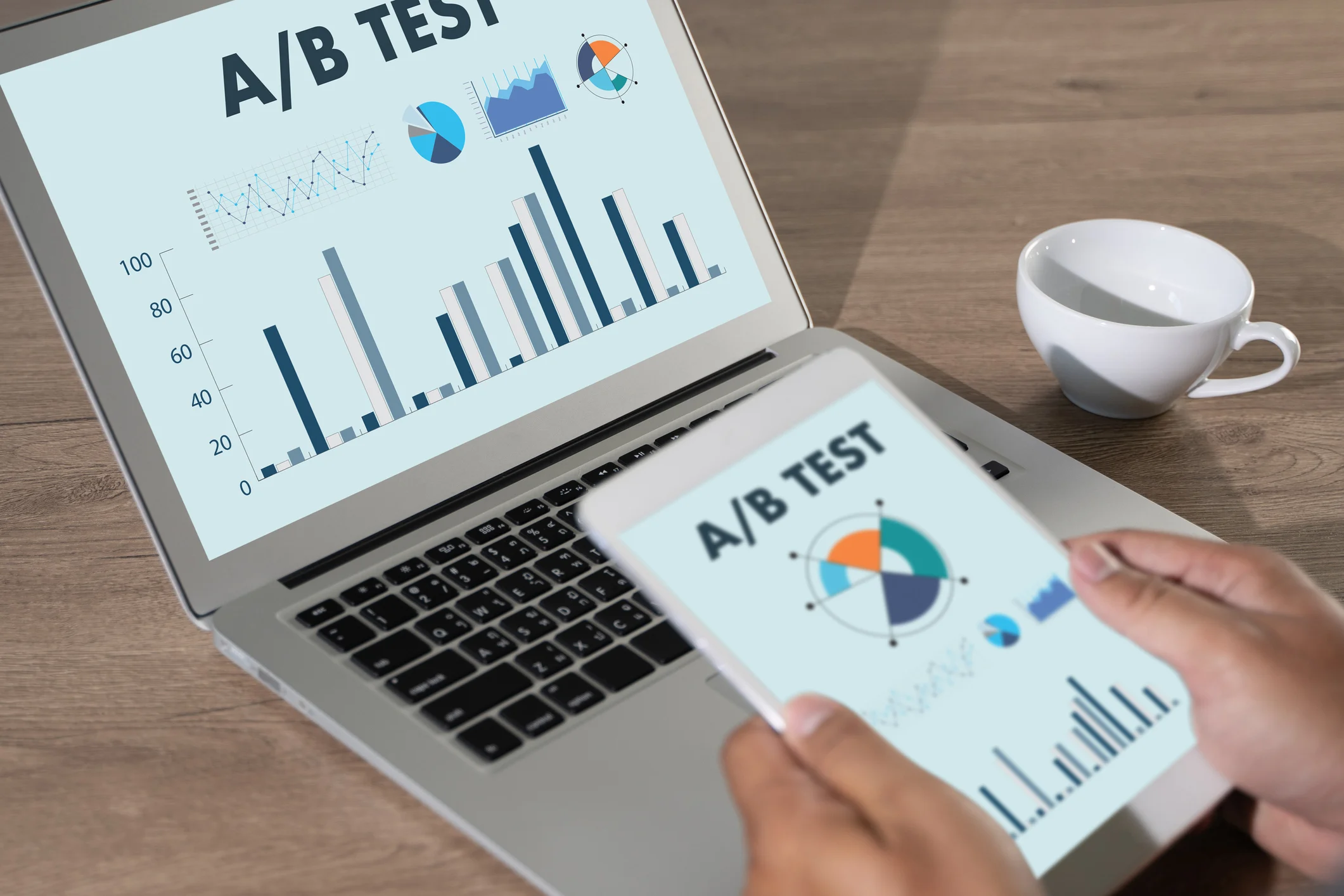In the ever-evolving world of digital marketing, understanding what resonates with your audience is crucial. One of the most effective ways to gain insights into consumer preferences and optimize your marketing strategies is through A/B testing. This powerful technique can help businesses improve conversion rates, enhance user experience, and ultimately drive revenue growth. Let’s delve into the importance of A/B testing in digital marketing and how it can transform your campaigns.

Table of Contents
ToggleWhat is A/B Testing?
A/B testing, also known as split testing, involves comparing two versions of a marketing asset (such as a website, email, or ad) to determine which one performs better. In an A/B test, you present version A (the control) and version B (the variant) to different segments of your audience, then measure specific metrics to assess performance, such as click-through rates, conversion rates, or engagement levels.
Why A/B Testing Matters
1. Data-Driven Decision Making
A/B testing allows marketers to make informed decisions based on actual data rather than assumptions or gut feelings. By analyzing the results of various tests, you can identify what works and what doesn’t. This evidence-based approach helps refine your marketing strategies, ensuring they align with audience preferences.
2. Improved Conversion Rates
One of the primary goals of digital marketing is to convert visitors into customers. A/B testing helps identify elements that drive conversions, such as call-to-action (CTA) buttons, headlines, images, or layout designs. By optimizing these elements through testing, you can significantly improve your conversion rates and maximize the effectiveness of your marketing efforts.
3. Enhanced User Experience
A/B testing not only focuses on conversions but also enhances user experience. By experimenting with different designs or content formats, you can discover how users interact with your website or marketing materials. This process can lead to a more intuitive and enjoyable experience for your audience, resulting in higher engagement and loyalty.
4. Cost-Effective Marketing
Investing in A/B testing can yield high returns. By identifying the most effective marketing strategies, you can allocate resources more efficiently and avoid wasting money on underperforming campaigns. This cost-effective approach allows you to maximize your marketing budget and achieve better results without overspending.
5. Continuous Improvement
Digital marketing is not a one-time effort; it requires ongoing optimization. A/B testing fosters a culture of continuous improvement by encouraging regular experimentation and analysis. As market trends change and consumer behaviors evolve, consistent testing ensures your marketing strategies remain relevant and effective.
6. Segmenting Audiences
A/B testing allows marketers to understand how different segments of their audience respond to various strategies. By tailoring messages to specific demographics or user behaviors, you can create more personalized experiences that resonate with your audience. This targeted approach enhances engagement and boosts conversion rates.
How to Implement A/B Testing
To reap the benefits of A/B testing, follow these steps:
1. Define Your Goals
Before conducting an A/B test, establish clear objectives. Determine which metrics you want to improve, such as conversion rates, click-through rates, or bounce rates. Setting specific goals will help you measure the success of your tests.
2. Choose What to Test
Select one element to test at a time to isolate its impact on performance. This could be a headline, image, color scheme, or CTA button. Testing multiple elements simultaneously can lead to ambiguous results and make it challenging to identify what caused any changes in performance.
3. Create Variations
Develop two versions of the marketing asset, ensuring that only the selected element differs. This clarity is essential for accurately attributing performance changes to the tested element.
4. Split Your Audience
Randomly divide your audience into two groups: one group will see version A, while the other sees version B. Ensure that the sample sizes are large enough to yield statistically significant results.
5. Analyze Results
After running the test for a sufficient amount of time, analyze the data. Look for significant differences in performance metrics between the two versions. Use statistical analysis to determine whether the results are meaningful or just due to chance.
6. Implement Changes
Based on your findings, implement the winning version and continue testing other elements. A/B testing is an ongoing process, and regular experimentation will help you continually refine your strategies.
Conclusion
A/B testing is an essential tool in the digital marketer’s toolkit. By leveraging data-driven insights, businesses can optimize their marketing efforts, enhance user experiences, and ultimately drive better results. In a landscape where customer preferences are constantly changing, A/B testing provides a systematic approach to understanding what works best for your audience. Embrace the power of A/B testing, and watch your digital marketing strategies reach new heights.


No responses yet